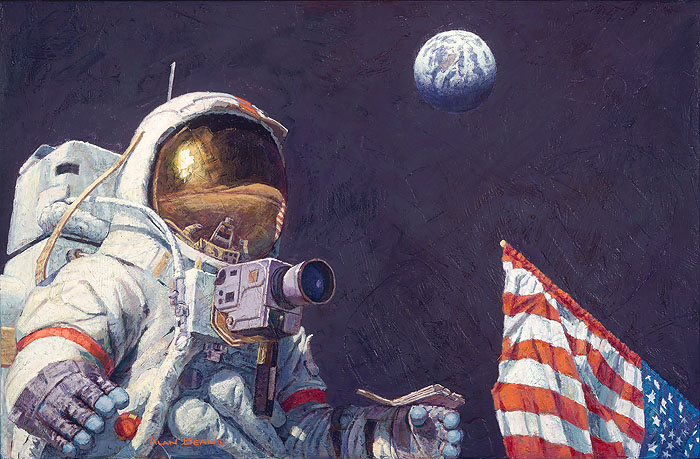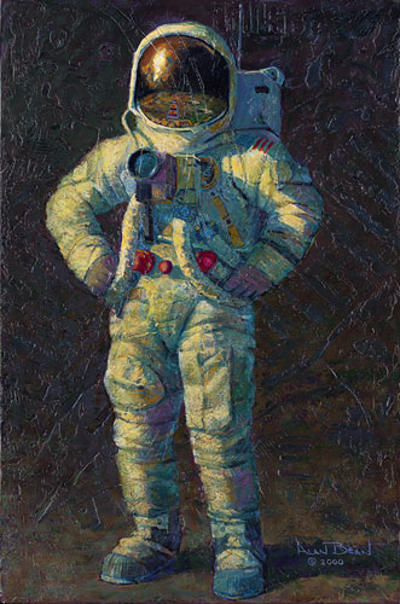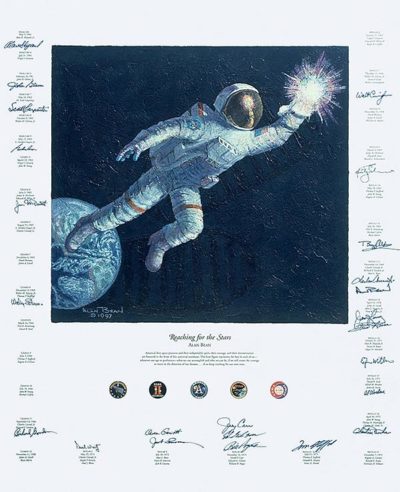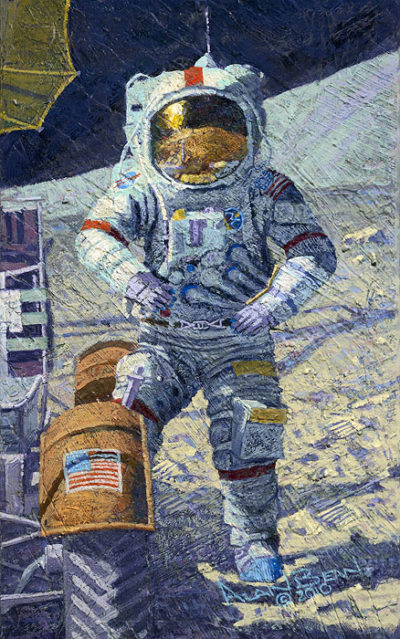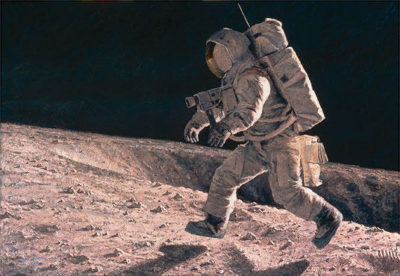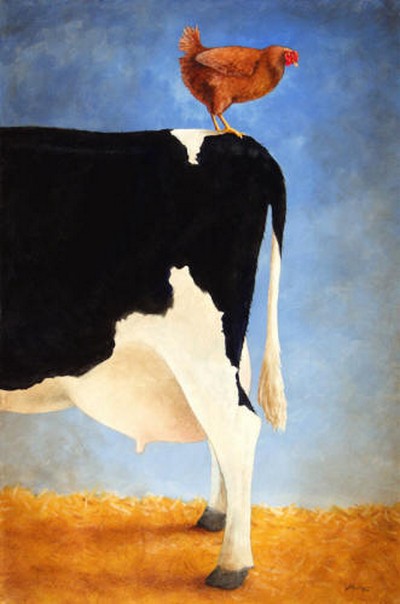The Last Man on the Moon
Artwork Description
Mankind has planted only six flags on the surface of moon and all of them are the stars and stripes. On December 14, 1972, Apollo XVII Commander Eugene Cernan became the last human being to stand on the lunar surface. Cernan, our flag and mother Earth, a distant 240,000 miles away, sum up the accomplishments of the Apollo program in Alan Bean’s “The Last Man on the Moon.”
“There were a total of twelve of us who got to explore another world as representatives of the people of the United States of America.” As Gene Cernan had said a few minutes earlier, ‘We’d like to uncover a plaque that has been on the front leg of our spacecraft . . . I’ll read what it says . . . Here man completed his first exploration of the moon, December 1972 A.D. May the spirit of peace in which we come be reflected in the lives of all mankind.’”
Astronaut Jack Schmitt, his partner on the moon, would say, “Humankind has started to do something that they have never done before. They have gone somewhere they have never been before, and shown they could live there. That is an exciting thing.”
“The Last Man on the Moon” Giclèe canvas captures the essence of space travel not only through subject and color but also texture. The tools that once helped him explore the moon now help him put the moon’s stamp on many of his paintings. He uses exact replicas of his Moon boots to make footprints across this surface, exactly like the Apollo boot prints remaining on the moon today. Next he uses the same geology hammer he worked with on the Apollo 12 mission to dig into the painting’s surface. Finally, a sharp edged bit from one of the core tubes is used to make round indentations in the surface.
This Fine Art Giclèe Canvas captures these signature features brilliantly. Each is signed by Apollo 12 astronaut, moonwalker and explorer Alan Bean. Own your own piece of art history, the only paintings of our journey to another world by an artist who was actually there!

